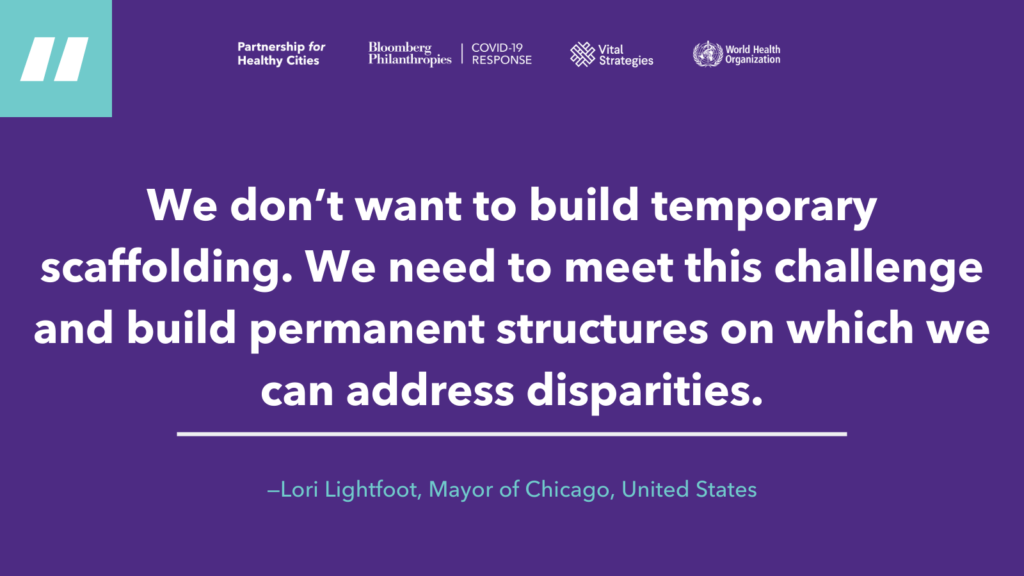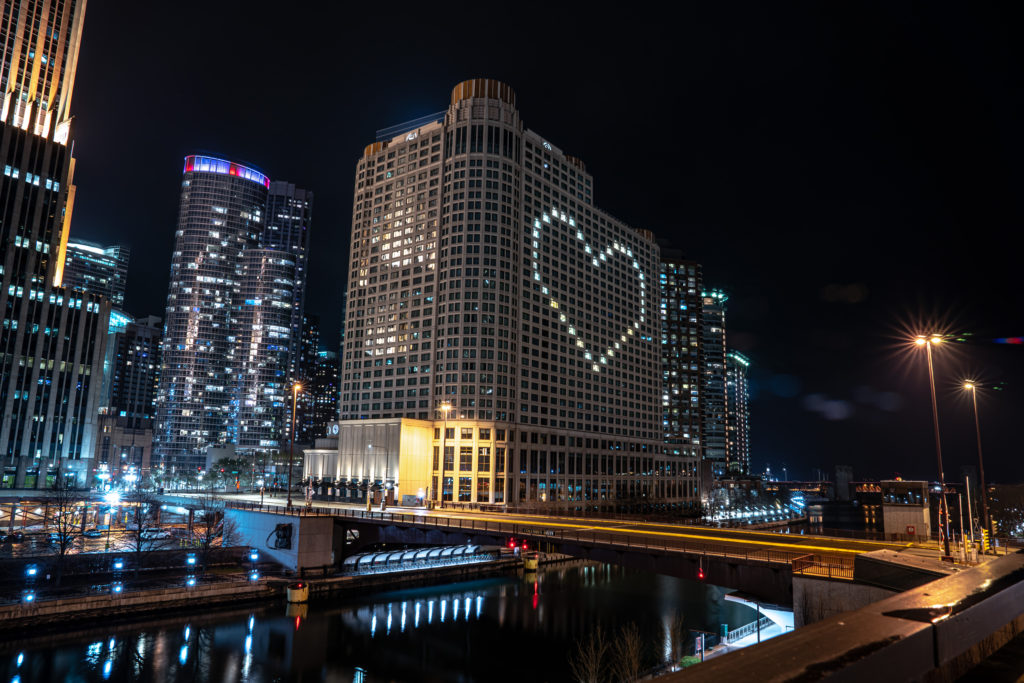Partnership for Healthy Cities webinars feature Chicago Mayor Lori Lightfoot, Colombo Mayor Rosy Senanayake and other notable public health experts
Two months after the World Health Organization (WHO) declared COVID-19 a pandemic, new challenges continue to emerge for local governments. This week, the Partnership for Healthy Cities webinar series focused on protecting vulnerable populations throughout all stages of the pandemic. A session for mayors addressed safely loosening physical distancing measures, and a second session later in the week guided cities’ public health teams on enhancing services for migrant, homeless, incarcerated and other disadvantaged populations.
High-level representatives from 23 cities worldwide joined the mayors’ session on May 12, which featured guidance on an array of indicators and considerations to inform a city’s strategy for easing public health and social measures.
Dr. Jay Varma—physician, epidemiologist and Africa CDC Senior Advisor—urged cities to learn from urban experiences with COVID-19 around the globe, and to use real-time data to guide decision-making. He suggested, “How we track an epidemic is similar to how we might track a severe storm.” Certain indicators taken together can demonstrate how much it’s raining (number of confirmed and suspected COVID-19 cases), how bad the flooding is (percentage of ICU beds occupied) and how to stay dry (indicators on the success of the local response). Dr. Varma also encouraged cities to partner with researchers and community groups to close gaps in testing and tracing. Marrying this outreach strategy with the data, he advised city leaders, would best inform “re-opening,” in addition to “re-closing” as necessary.

Mayors Lori Lightfoot of Chicago in the U.S., and Rosy Senanayake of Colombo, Sri Lanka spoke next about their experiences handling the pandemic’s economic and social impacts. We’re all in this crisis together, noted Mayor Lightfoot, but we have not experienced the crisis in the same way. Large racial disparities in Chicago have already fed stark differences among the city’s population: an analysis five weeks ago found that Black residents had a death rate seven times higher than that of any other demographic, and the city has more recently seen a surge in cases within the Latinx community.

These discoveries served as a springboard to action, with Mayor Lightfoot convening a racial equity rapid response team to provide extra support to the city’s minority and low-income communities. Meanwhile, active engagement with local groups has allowed the city government to better address challenges around food security, transportation, and even misinformation about how the virus spreads—laying the bricks for a stronger city, post-pandemic.
In Colombo, Sri Lanka, halfway across the globe from Chicago, nearly 60% of the population are resource-poor and rely on daily labor. They have been economically devastated by COVID-19. Mayor Senanayake’s government has taken action by distributing dry rations to 50,000 families and relief payments to over 12,000 residents and removing payments for care and medications at health clinics. Strong city-national coordination has played a critical role in stemming a major outbreak.
The technical arm of the Partnership webinar series continued on May 14 with a discussion on Protecting Vulnerable Populations. Twenty-eight cities participated in this session. They heard first from Dr. Santino Severoni, Acting Director of the World Health Organization’s Division of Health Systems and Public Health, who outlined the challenges facing migrant populations during the pandemic.
Refugees and migrants often: face barriers in accessing health care and information; are excluded from public health strategies and plans; suffer from unfavorable health determinants; and are unprotected against emergencies. They also commonly hold essential jobs in health and social care, retail, public transport and other sectors, placing them on the COVID-19 frontlines. Dr. Severoni urged cities to direct health services to and ensure a social safety net for their refugee and migrant populations. He praised cities in Argentina and the United States that have recognized the skills of migrants with medical credentials, integrating them into patient care facilities and bolstering strained health care systems.
Daliah Heller, Director of Drug Use Initiatives at Vital Strategies, next addressed the risk posed by COVID-19 in detention settings. Prisons and jails, designed almost exclusively with security in mind, offer their incarcerated populations little protection in a health emergency. Worldwide, and especially in the U.S., detention centers are home to some of the largest COVID-19 outbreaks—a risk to the incarcerated and staff alike. Emerging consensus points to the need for decarceration in the COVID-19 response: releasing people from prisons and jails to reduce congregate exposure; supporting re-entry services to ensure people can safely return to their communities; and reducing arrests to prevent exposure to the virus. These measures offer a roadmap for systemic justice reforms in cities worldwide.
“Correctional health is community health.”
Daliah Heller, Director of Drug Use Initiatives, Vital Strategies
Vicky Hobart, London’s Head of Health, highlighted local efforts to protect another vulnerable group: the city’s homeless population. She noted that economic pressures amid the global downturn have driven more people into homelessness, and that potential exists for the emergence of a new cohort of people experiencing homelessness, or “rough sleepers.” The city has moved to provide extensive outreach to this population, including regular testing, surveillance, accommodation and care, operating with the goal of “no return to rough sleeping.”
For webinar recordings and additional tools on supporting vulnerable populations during the pandemic, explore the Partnership for Healthy Cities COVID-19 Response Center at: www.cities4health.org
About the Partnership for Healthy Cities:
The Partnership for Healthy Cities is a prestigious global network of cities committed to saving lives by preventing noncommunicable diseases (NCDs) and injuries. Supported by Bloomberg Philanthropies in partnership with WHO, as well as Vital Strategies, this initiative enables cities around the world to deliver a high-impact policy or programmatic intervention to reduce NCDs and injuries in their communities. For more information, visit: https://partnershipforhealthycities.bloomberg.org/
The Partnership for Healthy Cities COVID-19 Response is part of the $40 million Bloomberg Philanthropies COVID-19 Global Response Initiative. By collaborating with the WHO and Resolve to Save Lives, an initiative of Vital Strategies, the Partnership for Healthy Cities COVID-19 Response is working hand-in-hand with the world’s leading experts on epidemic prevention.